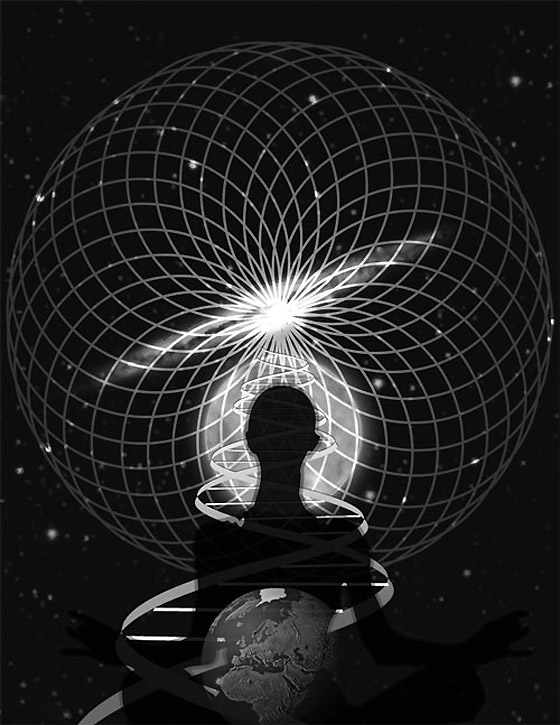 OCBBM |
OCBBM | A third important misconception of consciousness is that it is the basis for learning. Particularly for the long and illustrious series of Associationist psychologists through the eighteenth and nineteenth centuries, learning was a matter of ideas in consciousness being grouped by similarity, contiguity, or occasionally some other relationship. Nor did it matter whether we were speaking of a man or an animal; all learning was “profiting from experience” or ideas coming together in consciousness - as I said in the Introduction. And so contemporary common knowledge, without realizing quite why, has culturally inherited the notion that consciousness is necessary for learning.
The matter is somewhat complex. It is also unfortunately disfigured in psychology by a sometimes forbidding jargon, which is really an overgeneralization of the spinal-reflex terminology of the nineteenth century. But, for our purposes, we may consider the laboratory study of learning to have been of three central kinds, the learning of signals, skills, and solutions. Let us take up each in turn, asking the question, is consciousness necessary?
Signal learning (or classical or Pavlovian conditioning) is the simplest example. If a light signal immediately followed by a puff of air through a rubber tube is directed at a person’s eye about ten times, the eyelid, which previously blinked only to the puff of air, will begin to blink to the light signal alone, and this becomes more and more frequent as trials proceed.[9] Subjects who have undergone this well-known procedure of signal learning report that it has no conscious component whatever. Indeed, consciousness, in this example the intrusion of voluntary eye blinks to try to assist the signal learning, blocks it from occurring.
In more everyday situations, the same simple associative learning can be shown to go on without any consciousness that it has occurred. If a distinct kind of music is played while you are eating a particularly delicious lunch, the next time you hear the music you will like its sounds slightly more and even have a little more saliva in your mouth. The music has become a signal for pleasure which mixes with your judgment. And the same is true for paintings.[10] Subjects who have gone through this kind of test in the laboratory, when asked why they liked the music or paintings better after lunch, could not say. They were not conscious they had learned anything. But the really interesting thing here is that if you know about the phenomenon beforehand and are conscious of the contingency between food and the music or painting, the learning does not occur. Again, consciousness actually reduces our earning abilities of this type, let alone not being necessary for them.
As we saw earlier in the performance of skills, so in the learning of skills, consciousness is indeed like a helpless spectator, having little to do. A simple experiment will demonstrate this fact. Take a coin in each hand and toss them both, crossing them in the air in such a way that each coin is caught by the opposite hand. This you can learn in a dozen trials. As you do, ask, are you conscious of everything you do? Is consciousness necessary at all? I think you will find that learning is much better described as being ‘organic’ rather than conscious. Consciousness takes you into the task, giving you the goal to be reached. But from then on, apart perhaps from fleeting neurotic concerns about your abilities at such tasks, it is as if the learning is done for you. Yet the nineteenth century, taking consciousness to be the whole architect of behavior, would have tried to explain such a task as consciously recognizing the good and bad motions, and by free choice repeating the former and dropping out the latter!
The learning of complex skills is no different in this respect. Typewriting has been extensively studied, it generally being agreed in the words of one experimenter “that all adaptations and short cuts in methods were unconsciously made, that is, fallen into by the learners quite unintentionally. The learners suddenly noticed that they were doing certain parts of the work in a new and better way.” [11]
In the coin-tossing experiment, you may have even discovered that consciousness if present impeded your learning. This is a very common finding in the learning of skills, just as we saw it was in their performance. Let the learning go on without your being too conscious of it, and it is all done more smoothly and efficiently. Sometimes too much so, for, in complex skills like typing, one may learn to consistently type ‘hte’ for ‘the’. The remedy is to reverse the process by consciously practicing the mistake ‘hte’, whereupon contrary to the usual idea of ‘practice makes perfect’, the mistake drops away - a phenomenon called negative practice.
In the common motor skills studied in the laboratory as well, such as complex pursuit-rotor systems or mirror-tracing, the subjects who are asked to be very conscious of their movements do worse. [12] And athletic trainers whom I have interviewed are unwittingly following such laboratory-proven principles when they urge their trainees not to think so much about what they are doing. The Zen exercise of learning archery is extremely explicit on this, advising the archer not to think of himself as drawing the bow and releasing the arrow, but releasing himself from the consciousness of what he is doing by letting the bow stretch itself and the arrow release itself from the fingers at the proper time.
Solution learning (or instrumental learning or operant conditioning) is a more complex case. Usually when one is acquiring some solution to a problem or some path to a goal, consciousness plays a very considerable role in setting up the problem in a certain way. But consciousness is not necessary. Instances can be shown in which a person has no consciousness whatever of either the goal he is seeking or the solution he is finding to achieve that goal.
Another simple experiment can demonstrate this. Ask someone to sit opposite you and to say words, as many words as he can think of, pausing two or three seconds after each of them for you to write them down. If after every plural noun (or adjective, or abstract word, or whatever you choose) you say “good” or “right” as you write it down, or simply “mmm-hmm” or smile, or repeat the plural word pleasantly, the frequency of plural nouns (or whatever) will increase significantly as he goes on saying words. The important thing here is that the subject is not aware that he is learning anything at all. [13] He is not conscious that he is trying to find a way to make you increase your encouraging remarks, or even of his solution to that problem. Every day, in all our conversations, we are constantly training and being trained by each other in this manner, and yet we are never conscious of it.
Such unconscious learning is not confined to verbal behavior. Members of a psychology class were asked to compliment any girl at the college wearing red. Within a week the cafeteria was a blaze of red (and friendliness), and none of the girls was aware of being influenced. Another class, a week after being told about unconscious learning and training, tried it on the professor. Every time he moved toward the right side of the lecture hall, they paid rapt attention and roared at his jokes. It is reported that they were almost able to train him right out the door, he remaining unaware of anything unusual. [14]
The critical problem with most of these studies is that if the subject decided beforehand to look for such contingencies, he would of course be conscious of what he was learning to do. One way to get around this is to use a behavioral response which is imperceptible to the subject. And this has been done, using a very small muscle in the thumb whose movements are imperceptible to us and can only be detected by an electrical recording apparatus. The subjects were told that the experiments were concerned with the effect of intermittent unpleasant noise combined with music upon muscle tension. Four electrodes were placed on their bodies, the only real one being the one over the small thumb muscle, the other three being dummy electrodes. The apparatus was so arranged that whenever the imperceptible thumb-muscle twitch was electrically detected, the unpleasant noise was stopped for 15 seconds if it was already sounding, or delayed for 15 seconds if was not turned on at the time of the twitch. In all subjects, the imperceptible thumb twitch that turned off the distressing noise increased in rate without the subjects’ being the slightest bit conscious that they were learning to turn off the unpleasant noise.
Thus, consciousness is not a necessary part of the learning process, and this is true whether it be the learning of signals, skills, or solutions. There is, of course, much more to say on this fascinating subject, for the whole thrust of contemporary research in behavior modification is along these lines. But, for the present, we have simply established that the older doctrine that conscious experience is the substrate of all learning is clearly and absolutely false. At this point, we can at least conclude that it is possible - possible I say - to conceive of human beings who are not conscious and yet can learn and solve problems
9. G. A. Kimble, “Conditioning as a function of the time between conditioned and unconditioned stimuli,” Journal of Experimental Psychology, 1947, 37: 1-15.
10. These studies are those of Gregory Razran and are discussed on page 232 of his Mind in Evolution (Boston: Houghton Muffin, 1971). They are discussed critically in relation to the whole problem of unintentional learning by T. A. Ryan, Intentional Behavior (New York: Ronald Press, 1970), pp. 235-236.
11. W.F. Book, The Psychology of Skill, (New York: Gregg, 1925).
12. H.L. Waskom, “An experimental analysis of incentive and forced application and their effect upon learning,” Journal of Psychology, 1936, 2: 393-408.
13. J. Greenspoon, “The reinforcing effect of two spoken sounds on the frequency of two responses,” American Journal of Psychology, 1955, 68: 409-416. But there is considerable controversy here, particularly in the order and wording of postexperimental questions. There may even be a kind of tacit contract between subject and experimenter. See Robert Rosenthal, Experimenter Effects in Behavioral Research (New York: Appleton-Century-Crofts, 1966). In this controversy, I presently agree with Postman that the learning occurs before the subject becomes conscious of the reinforcement contingency, and indeed that consciousness would not occur unless this had been so. L. Postman and L. Sassenrath, “The automatic action of verbal rewards and punishment,” Journal of General Psychology, 1961, 65: 109-136.
14. W. Lamnbert Gardiner, Psychology: A Story of a Search (Belmont, California:Brooks/Cole, 5970), p. 76.
 I've been meaning to do a quick and dirty exegesis of Rev. Jeremiah Wright's most "controversial" sermonic utterances, i.e., those suggesting an organized effort to damage Black folks with drugs, disease, and incarceration. Thankfully one of my literary icons, the great Ishmael Reed, has written the response that I would've liked to write - and then some. It's lengthy and well worth reading in its entirety.
I've been meaning to do a quick and dirty exegesis of Rev. Jeremiah Wright's most "controversial" sermonic utterances, i.e., those suggesting an organized effort to damage Black folks with drugs, disease, and incarceration. Thankfully one of my literary icons, the great Ishmael Reed, has written the response that I would've liked to write - and then some. It's lengthy and well worth reading in its entirety.
















